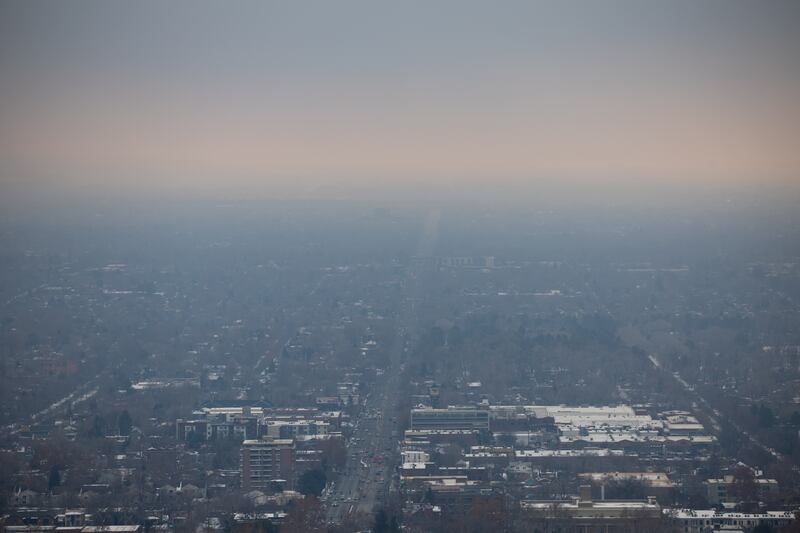US Magnesium, the largest magnesium producer in the United States, located next to Utah’s Great Salt Lake, is contributing up to 25% of the chemicals that help to form fine particulate pollution, or PM2.5, which causes northern Utah’s notorious inversions and health problems for vulnerable residents.
Data was gathered from a first of its kind study in 2017 in which the National Oceanic and Atmospheric Administration and multiple partners used an aircraft to fly layers of inversions to take measurements of what cocktail of chemicals went into their formation.
The research, published this week in the Environmental Science and Technology journal, found that an industrial plume from US Magnesium contained “photochemically produced halogen radicals” — chlorine and bromine — that were significant contributors to the persistent winter brown clouds.
“We could see during our research flights in 2017 that the air around the plant was unlike anything we had sampled previously due to the high chlorine emissions,” said NOAA scientist Steven Brown, who led the field campaign. “We were surprised that it had such a large effect on winter PM2.5 across the entire region.”
The Utah Division of Air Quality requires reporting of particulate precursors, such as chlorine and nitrogen oxide emissions, which are then shared with the U.S. Environmental Protection Agency. However, NOAA’s measurements also identified significant emissions of bromine, a reactive chemical that is not required to be reported.
“Our measurements of chlorine and nitrogen oxides agree with what the facility reports to regulators,” said lead author Carrie Womack. “But what we found suggests that bromine industrial emissions may deserve a closer look.”

US Magnesium extracts the metal from the brine of the Great Salt Lake, at a plant upwind of Salt Lake City.
Particulate matter contains microscopic solids or liquid droplets that are small enough to be inhaled and cause serious health problems, including respiratory complications, stroke, aggravated asthma and early onset of dementia, particularly in women.
John Lin, an atmospheric science professor at the University of Utah who co-authored the study, said the research that pointed to bromine as a bad actor in the Wasatch Front pollution problem was particularly interesting.
“It’s kind of a very specialized chemistry that we have here. It’s very rare to have emissions like this. And it’s not obvious I would say on exactly how it happens, but it’s part of the chemical soup in the atmosphere.” he said. “I’m struck by how complex the chemical pathways are.”
Lin added that the impact these chemicals have on the formation of PM2.5 has only been recognized recently and the emissions are not typically as high as what was documented on the Wasatch Front.
“Some of the few studies that have looked at this recently are from China. So it’s not very typical in the United States to have this level of concentrated emissions.”
While bromine is not currently inventoried by regulators, he said it is “definitely” worth looking at some more.
The fact that the modeling showed the significant presence of chlorine and bromine being emitted on the Wasatch Front is something everyone should consider, he added.
Regulators at the Utah Division of Air Quality have said they hoped to use the in-flight inventories of pollution done in 2017 as a “blueprint” tackling the region’s pollution problem.



